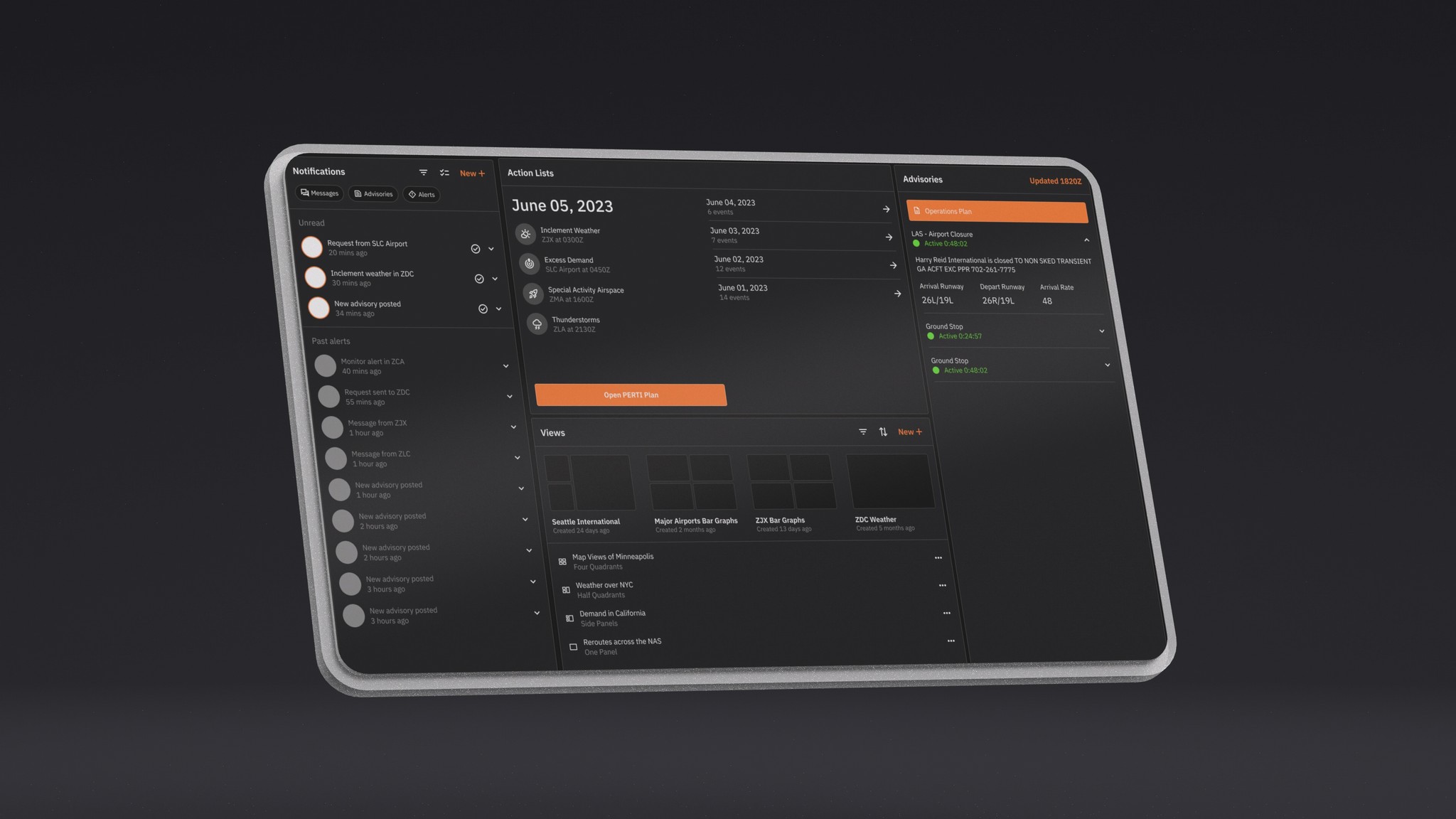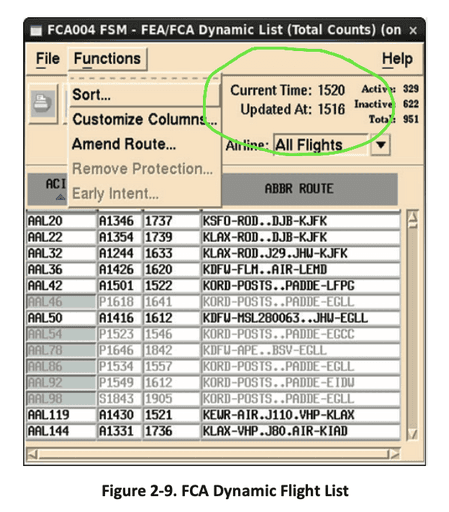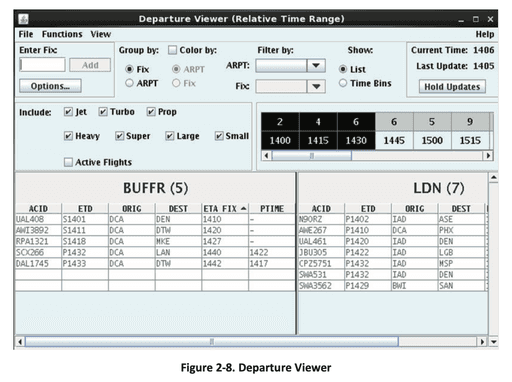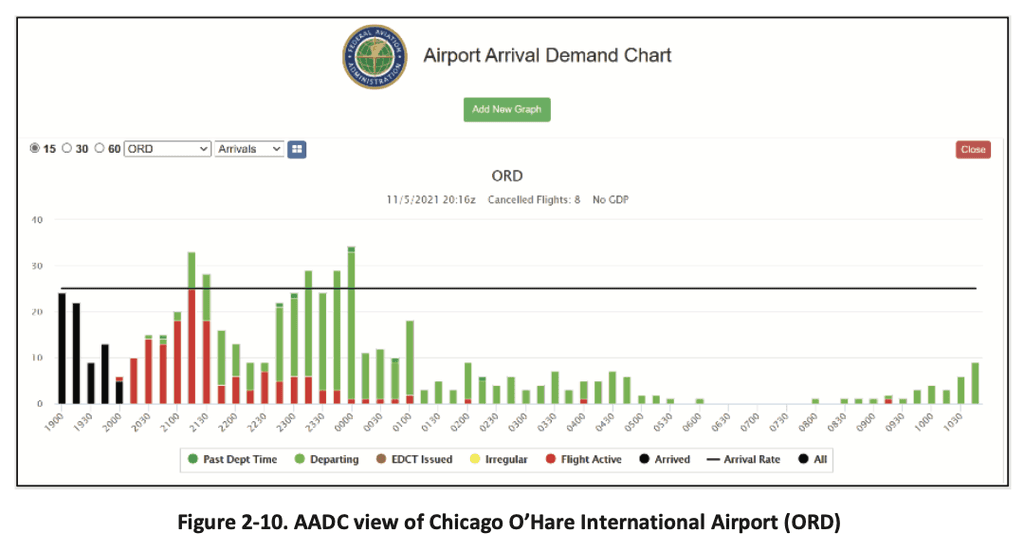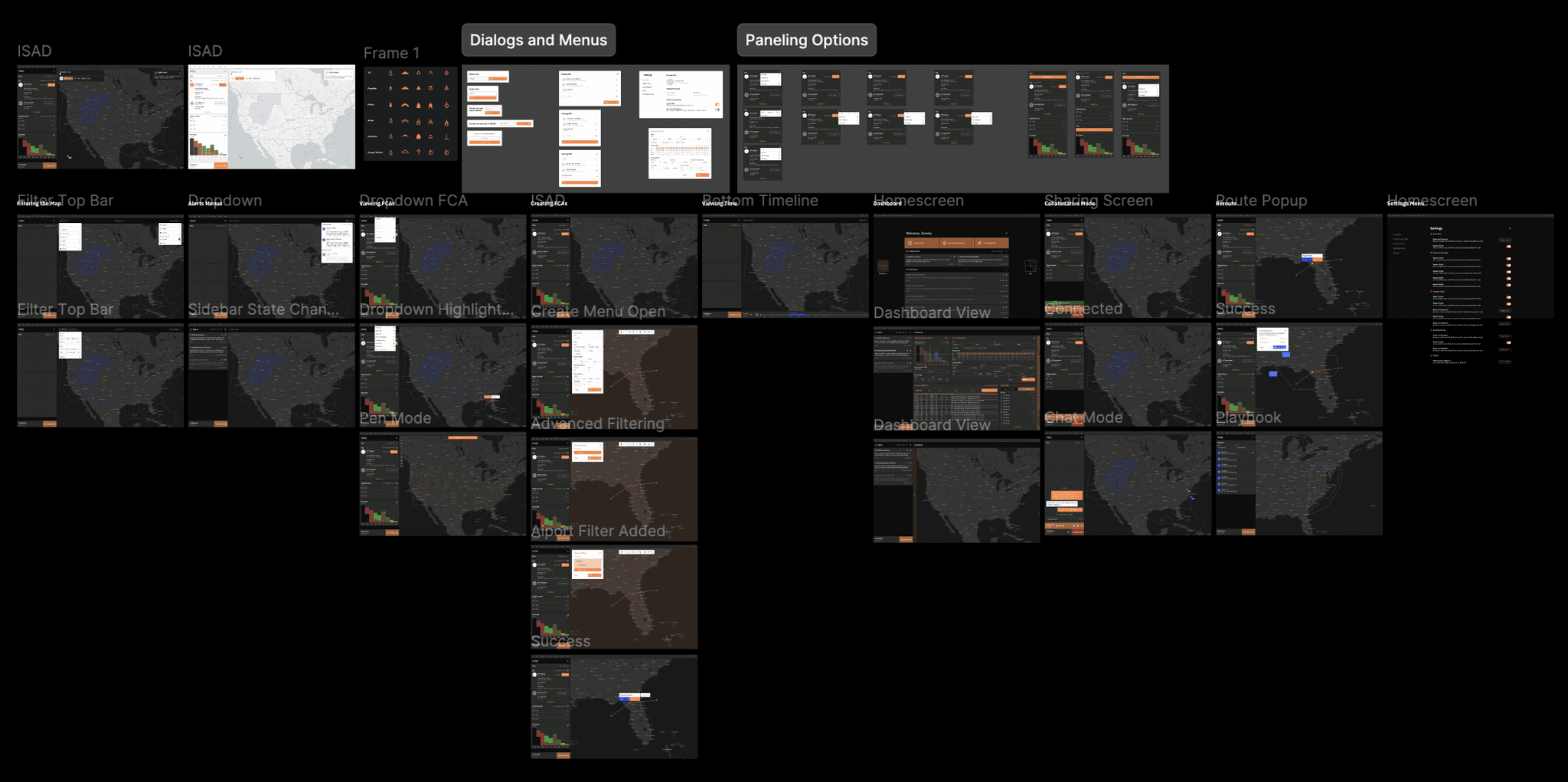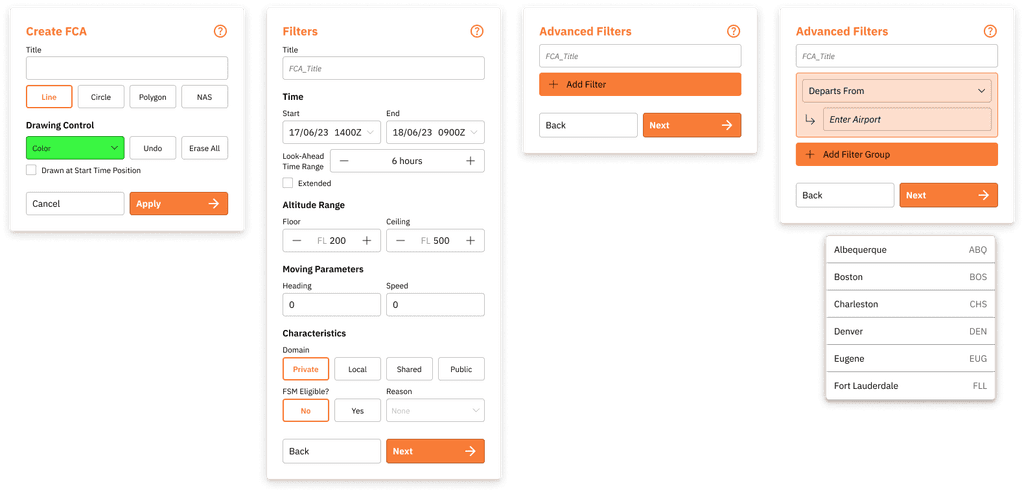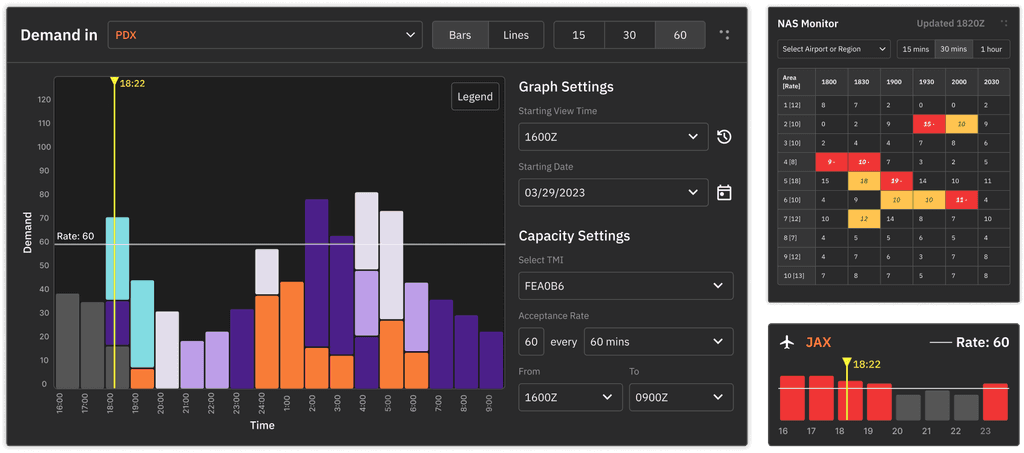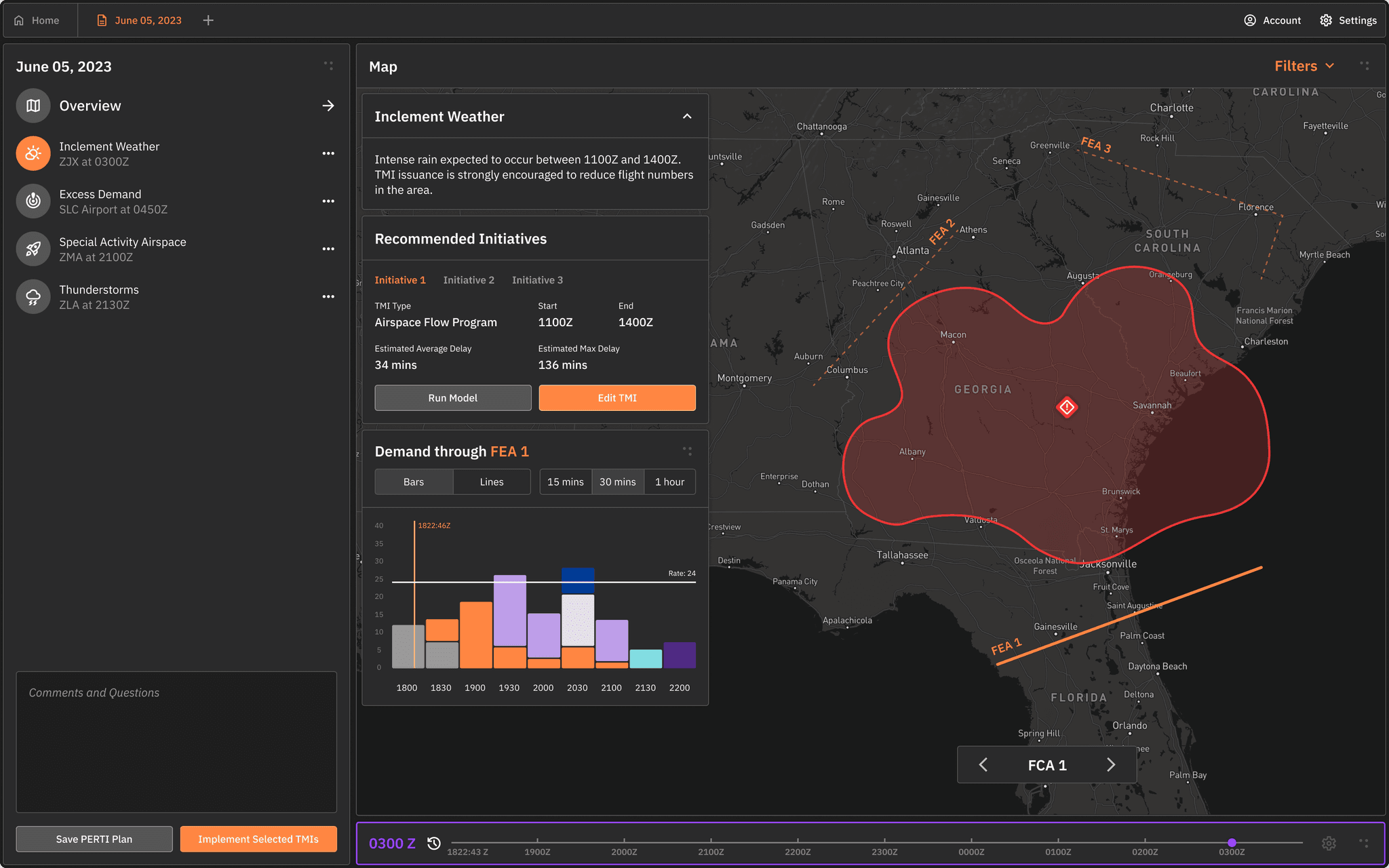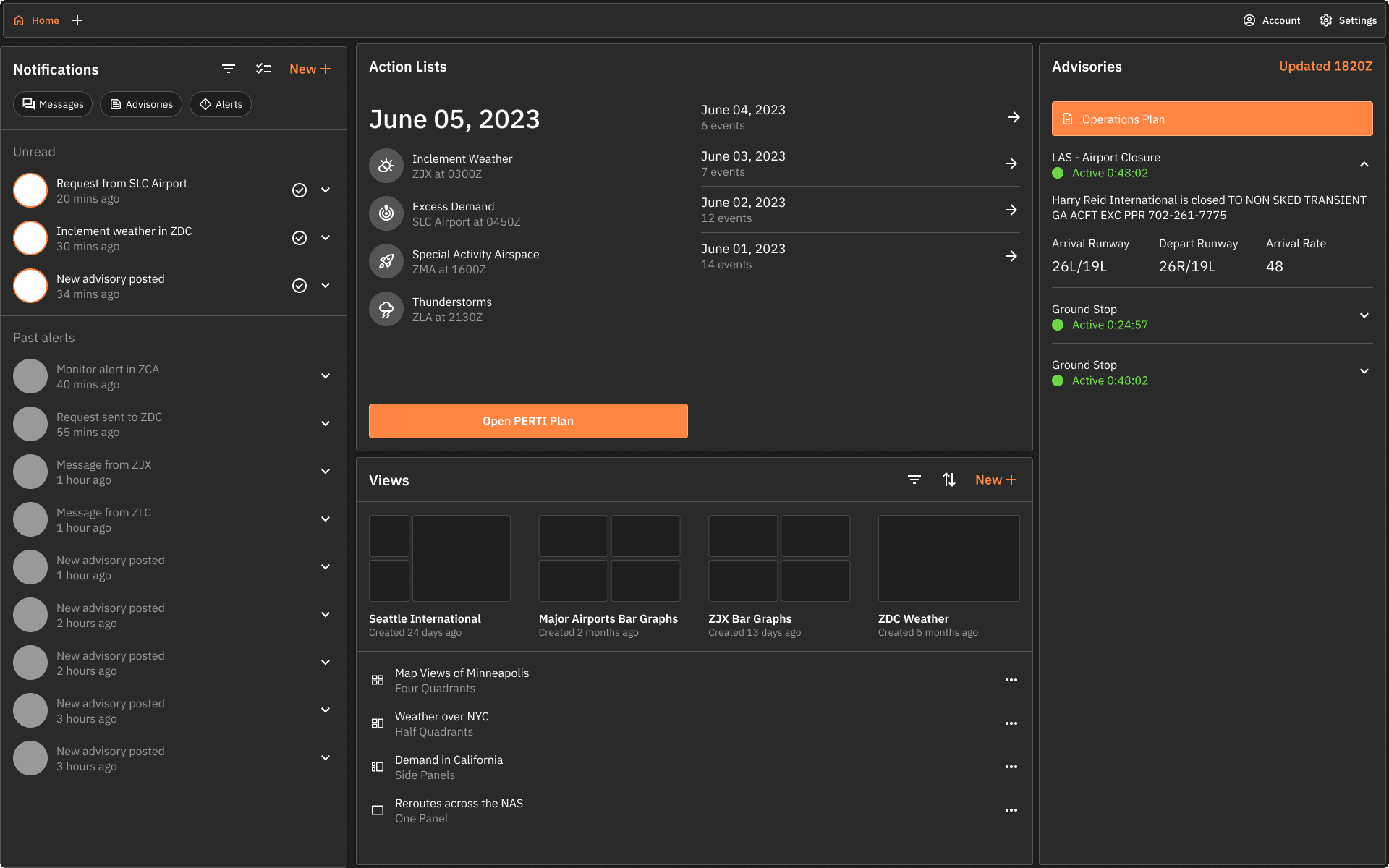project_content
Problem
Flight management software is old.
The Federal Aviation Administration has been using the same software for decades and it shows. Many systems have been tacked on and don't interface well with each other. The TFM-AID competition was held to give students the opportunity to envision a new future for flight management systems.
The project brief broke down the problem into several categories:
Hard to Focus
Traffic management coordinators have to direct flights down to the minute and react to problem situations like storms or increased delay. The current system doesn't allow them to focus well.
Disconnected Programs
The current system is spread out across multiple programs forcing the user to switch applications frequently. This makes the job difficult when every second counts.
Outdated Visuals
Flight Management Data Systems (FMDS) still retains the visual style and structure of a program from the early 1990s. There's a lot of improvements to be made to the UX so it's more visually appealing and more in-line with modern standards.
Examples of current software
Process
Lots and lots of research.
Reviewing Documentation
Our team received over 100 pages of documentation from the competition that explained the current user flow through the system as well as how they plan to change the system for the next iteration. We were tasked with envisioning how this new system would look visually.
Exploration
Our team explored broadly first, expanding our ideas and seeing how the different aspects of the system could be portrayed in a new visual style.
Site Visits
On multiple occasions, we had the opportunity to visit local airport facilities like the Provo Airport Traffic Control Tower and the Salt Lake City Control Center. Managers who use the current software provided invaluable insight to their experience.
Principles
Our guiding ideals for the project.
Looking at our explorations in addition to the interviews and site visits we had conducted, we started to consolidate ideas based on a set of guiding principles:
Signal to Noise Ratio
Minimizing the amount of distractions (noise) so the information (signal) is effectively communicated. In practice, this meant reducing visual clutter through spacing, layout, and reduction of disparate colors.
Progressive Disclosure
A program such as this has lots of information and data to be shown. It can be overwhelming if the user is shown too much at once. This principle organizes information and only surfaces it when it's needed.
Just-in-time Information
We saw that a lot of users had to input things manually and seek out the information they needed across multiple windows and programs. We aimed to give the user opportunities to find the right information easily and quickly.
Solution
Project Management Of Airspace
Purposeful Use of Color
Color is a key indicator for a lot of information throughout the software.
Updated the colors to minimize the amount of distracting components.
Only problem areas are highlighted in RED in the software as shown on the right.
We use PURPLE when the software is modeling data so it's not confused with current data.
Automated Actions
The previous system required a lot of manual input so we implemented some improvements.
No longer need to retype data from one source to another and repeating the same information for logging purposes. It fills across all fields automatically.
Automating processes and making recommendations for courses of action.
Integrated Communication
Before, spread out features slowed down communication and efficiency.
The new home screen contains notifications, upcoming tasks, and any current advisories posted by the Command Center.
User can now quickly see what's already been communicated and what still requires action
Presentation
Showing our work to the FAA
Earning a place among the finalists was an immense honor for our team. We prepared a pitch for our product and flew to Washington D.C. to show our designs to a board of key stakeholders from the FAA. While our team didn't receive first place, we received valuable feedback and learned from the other teams' submissions.
